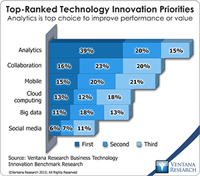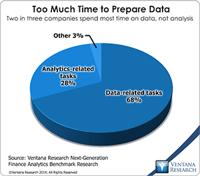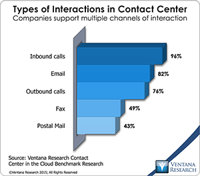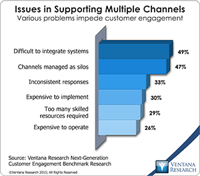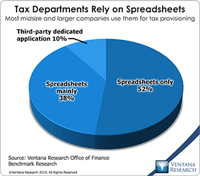Our benchmark research into big data analytics shows that marketing in the form of cross-selling and upselling (38%) and customer understanding (32%) are the top use cases for big data analytics. Related to these uses, organizations today spend billions of dollars on programs seeking customer loyalty and satisfaction. A powerful metric that impacts this spending is net promoter score (NPS), which attempts to connect brand promotion with revenue. NPS has proven to be a popular metric among major...
Read More
Topics:
Big Data,
Customer Performance,
Business Analytics,
Business Performance,
Operational Intelligence,
Information Optimization
Unit4 is a global business software vendor focused on business and professional services, the public sector and higher education. Recently company executives met with industry analysts to provide an update of its strategic roadmap and to recap its accomplishments since being acquired by a private equity firm in 2014. Unit4 is the result of successive mergers of ERP and business software companies, notably CODA and Agresso. The company is also a part-owner (with salesforce.com and others) of...
Read More
Topics:
Predictive Analytics,
Human Capital,
Office of Finance,
Operational Performance,
Business Analytics,
Business Collaboration,
Business Performance,
Cloud Computing,
Financial Performance
Envision is a vendor of workforce optimization software that I have been following for many years. It is rated a Hot vendor in our 2015 Workforce Optimization Value Index. It offers a full suite of products, including interaction capture, quality monitoring, workforce management, coaching and training, agent compensation management and workforce analytics. In an analysis last year I wrote about how, in an effort to make workforce optimization more accessible and affordable, it created an...
Read More
Topics:
Big Data,
Customer Performance,
Cloud Computing,
Call Center
OnviSource is a 10-year-old vendor of workforce optimization software whose core product, OnviCenter 7, includes interaction capture, quality monitoring, workforce management, coaching and training, and workforce analytics. The company is rated a Hot vendor in our 2015 Workforce Optimization Value Index. It scored highly in the Manageability, Usability and Reliability categories but was held back by lack of compensation management (for which it provides input to third-party products) and some...
Read More
Topics:
Big Data,
Customer Experience,
Customer Performance,
Cloud Computing,
Call Center
IBM’s Vision user conference brings together customers who use its software for financial and sales performance management (FPM and SPM, respectively) as well as governance, risk management and compliance (GRC). Analytics is a technology that can enhance each of these activities. The recent conference and many of its sessions highlighted IBM’s growing emphasis on making more sophisticated analytics easier to use by – and therefore more useful to – general business users and their organizations....
Read More
Topics:
Big Data,
Planning,
Predictive Analytics,
Governance,
Human Capital,
Budgeting,
Customer Performance,
Operational Performance,
Analytics,
Business Analytics,
Business Performance,
Cloud Computing,
Financial Performance,
Visualization
Contact centers in the cloud are increasingly popular alternatives to managing them on a company’s own premises. Running many business applications on hardware owned and managed by a third party is relatively straightforward and requires less support internally. Also the payment model changes from a license to a recurring fee, and typically the vendor provides updates as part of the fee. The challenge with placing a contact center in the cloud is that it is not a single system or even a...
Read More
Topics:
Big Data,
Customer Feedback Management,
Customer Performance,
Business Collaboration,
Cloud Computing,
Call Center
In recent years I have tracked Salesforce, its product development and its announcements. Despite having grown into a giant corporation, it continues to introduce innovations. At a recent analyst day in the U.K., I followed up on the company’s overall direction, some key product developments and a new service to help drive adoption of innovative customer-related processes. Salesforce’s primary aim is to help organizations market and sell to, service, engage with and know their customers through...
Read More
Topics:
Big Data,
Customer Feedback Management,
Customer Performance,
Business Analytics,
Business Collaboration,
Cloud Computing,
Call Center
Companies trust their tax departments with a highly sensitive and essential task. Direct (income) taxes usually are the second largest corporate expense, after salaries and wages. Failure to understand and manage this liability is expensive, whether because taxes are overpaid or because of fines and interest levied for underpayment. Moreover, taxes are a political issue, and corporations – especially larger ones – must be mindful of the reputational implications of their tax liabilities.
Read More
Topics:
Big Data,
Analytics,
Business Performance,
Financial Performance

